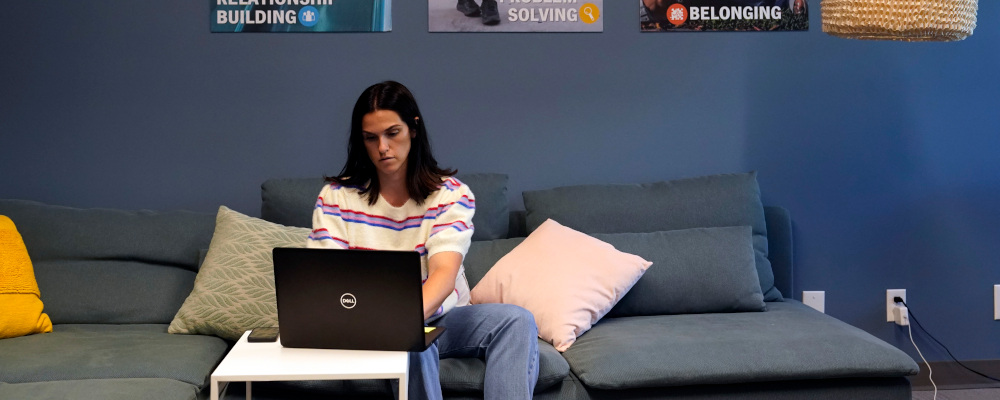
On New Year’s Eve in 2019, I, with a bunch of my friends, loudly sang “Auld Lang Syne” into the cold winter air. The 2010s were coming to a close and like billions of people across the world, we all loudly claimed that 2020 would be our year.
Like many other young people, especially university and college students who were about to graduate, we were excited and felt optimistic about the new decade and truly starting our professional careers and the adventures we would have.
At that place in time, we just felt that our lives really were about to begin.
Of course, we could have never anticipated that two months later the World Health Organization would declare COVID-19 a global pandemic, essentially causing society-wide lockdowns. There were people finishing their degrees and schooling at home, working from home, or just being laid off altogether.
Graduating via Zoom was definitely not in the plan, nor was getting rejected by hundreds of employers who didn’t want to take a chance on a new graduate in a period of such uncertainty.
Still, I was luckier than most. I was ultimately able to find contract work with the Munk Debates during the latter part of 2020. That was better than the 20.1 percent of my age group who were unemployed that year. This then led me to a summer contract with The Hub the following year, which has since turned into full-time employment.
Thanks to remote work, in other words, I was at least able to get my career started and earn some sort of a living during a worldwide pandemic and a massive recession. I was able to do so in the comfort of my home while safe from getting sick.
Now, working remotely for the last two years and having experience working in person in an office, I can say that remote work has had a lot of benefits. I enjoy the calm that it provides. Being able to work from home has meant that my life is less on the go than it used to be, including early mornings and long commute times.
In terms of productivity, I’ve been able to keep it up while working from home. According to polling, this is consistent with the experiences of others. Nearly a quarter of working professionals in Canada (23 percent) say they are equally productive whether they work at home or at the office, and 42 percent actually said that they even accomplish more at home, according to a 2022 report by a leading human resource firm.
Furthermore, it has given me the freedom to explore and maintain my physical, mental, and emotional health without being in a confined office space solely focusing on work. This has been especially crucial in the face of a string of unexpected and difficult events in my life including three funerals in the span of a few months. Because of remote work, it was relatively easy to pass work along logistically to my colleagues since the structure and work framework was already in place.
Also, given the fact that I am not comfortable showing my emotions, it made things a bit easier to explain the situation to my team behind a computer screen or over the phone. It was far easier to deal with these difficult personal circumstances in a remote work setting.
Notwithstanding these benefits, there have been some major drawbacks to working remotely as a young professional.
I’m hoping this confession doesn’t get me too much in trouble, but here it is: far too often, I start my day in my bed, on my laptop, and stay there much longer than I need to, despite creating an office/recording space at home.
Even though we’re more than two years into the work-home-from experience and I should have instilled the habits to actually be quote-on-quote “dressed for work,” much too often, if I’m not going to be on camera or recording a podcast episode, I am in my pyjamas far longer than I would like (guys, please don’t be mad!).
Furthermore, while tons of studies have shown the positive effects of working from home, as an extremely extroverted person staying at home in front of a computer for the most part of the day can get extremely tiresome and uninspiring. And while I have weekly calls with my team and we always check in on each other and meet people via Zoom or email, I do miss sitting physically beside coworkers just getting our work done or meeting new, interesting people in person. There’s something about being physically with someone doing the same work as you or meeting people in real life that just motivates you to get your work done and come up with new and interesting ideas or projects.
Way too often, I feel like I am in limbo thinking about my professional future and whether I am going to spend the next 40 years of my life working at home in front of a computer. Even though I know that may not be the case, once you’re in that slump it’s hard to get out of it.
Moreover, opportunities for personal interaction, networking, and serendipitous meetings can be scarce. For young professionals breaking into the job market, especially those coming from low-income backgrounds, or even those who come from first-generation immigrant families, networking is extremely important to establish strong professional relationships with your team and others in your field or sector. Without it, there is less of a likelihood of upward professional mobility, which in turn affects economic opportunities and earnings potential in the long run.
Now that the end of COVID-19 is “in sight,” there are renewed opportunities for meeting people or networking, but the opportunity cost of two years removed from the typical work environment is hard to overcome. There’s also the basic challenge of reintegrating from the virtual world of Zoom coffee chats to in-person interactions.
I would be remiss if I didn’t mention issues of race, gender, and other identities in this debate, especially since I am a racialized woman. One comment we received in response to our editorial on these issues highlighted that racialized and marginalized people have reported better working environments and conditions given to the lower likelihood and opportunity of being harassed in the workplace.
This seems like something of a Pyrrhic victory. Surely the answer to ongoing issues of workplace prejudice or discrimination cannot be that we minimize our collective interactions. That’s especially unfair to young minority professionals seeking fulfilling careers like their other colleagues.
Look, it is healthy to have your own workspace in the comfort of your home where you can focus and get work done productively. But it is also healthy as social beings to work in person with your colleagues, where ideas can be shared and we can inspire one another to do and be better.
Is it possible that some sort of golden mean can be found for those working in my industry or similar ones? I don’t know. What I do know is that as the pandemic slows down, I am not going to spend the rest of my 20s staying at home and not taking advantage of opportunities to meet people, experience new things, and live my life.
Recommended for You

Falice Chin: The ‘wild and weird’ Calgary Stampede

Canada is losing ground on investment. Here’s where

‘A celebration of the spirit of Alberta’: Ryan Hastman on the political, economic, and cultural importance of the Calgary Stampede

Michael Geist: Children accessing porn is a problem, but government-approved age verification technologies are not the answer




